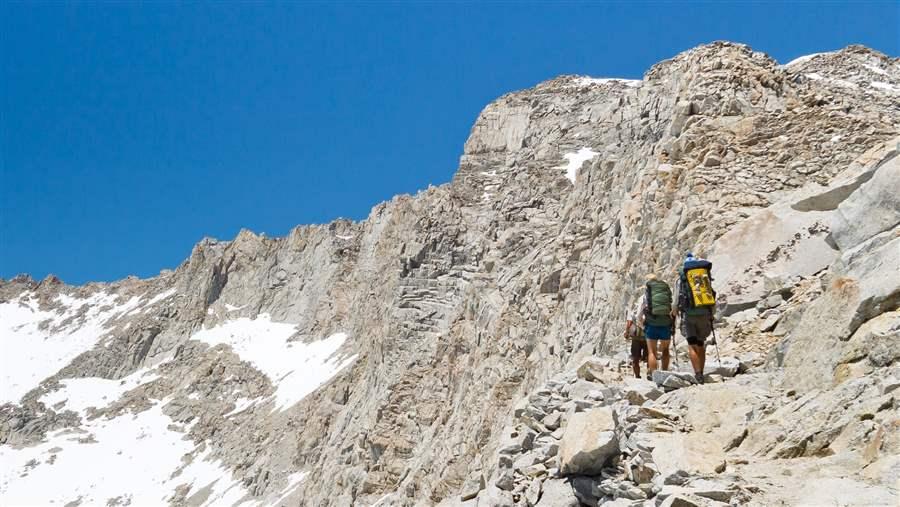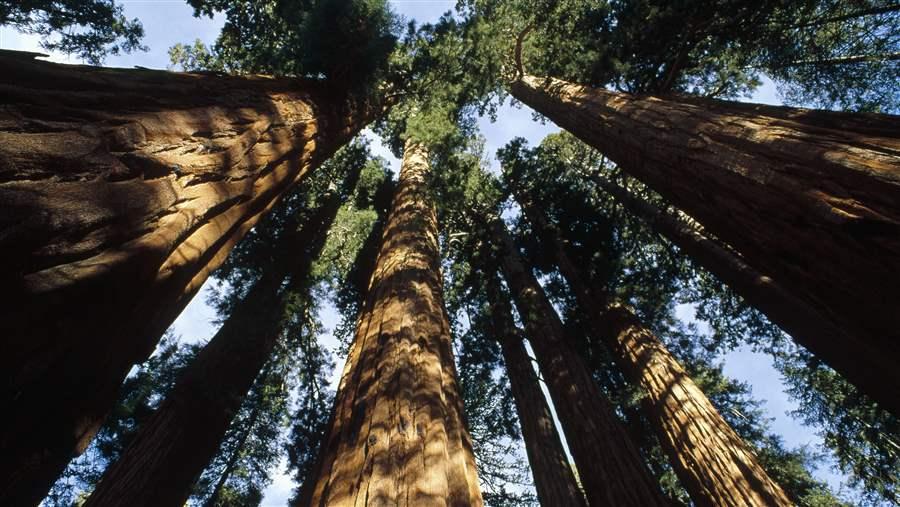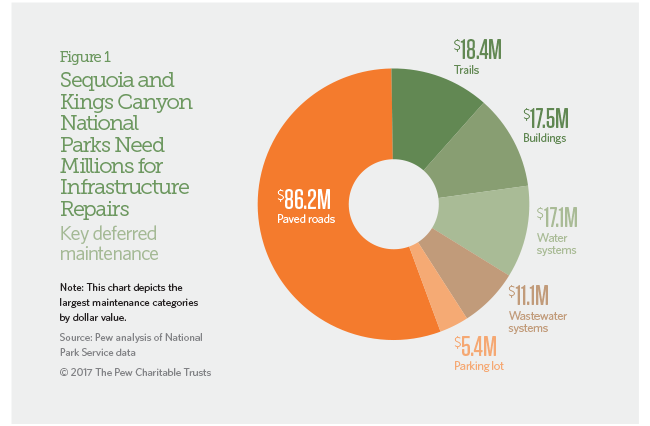Sequoia and Kings Canyon National Parks
California
Pew created this case study using National Park Service deferred maintenance data issued in fiscal year 2015. The information listed here may no longer reflect the NPS site’s current condition or maintenance requirements. To find the most up-to-date information, please use the National Park Repair Needs tool.
Overview
Size and scale are what make Sequoia and Kings Canyon National Parks unique. They are home to the largest trees in the world and the highest peak in the contiguous United States. Congress established Kings Canyon in 1940, followed by Sequoia in 1980. Today, the two are jointly managed due to their geographic proximity in California’s Sierra Nevada.
The parks extend from low-lying foothills through giant sequoia groves and across deep canyons to the crest of the Sierra Nevada. Together, they encompass 865,964 acres of land—nearly all of it wilderness. In this vast area, a backpacker can hike to a spot that is farther from a road than any other place in the contiguous United States. That said, road networks give visitors access to famed attractions such as the Giant Forest and Grant Grove. Unfortunately, these two iconic parks are burdened by more than $160 million in deferred maintenance.

Sequoia and Kings Canyon’s 800-mile trail network accounts for $18.4 million of the parks’ $162 million repair backlog.
© iStockphoto
Maintenance challenges
As is the case in many national parks, Sequoia and Kings Canyon’s transportation system requires most of the repairs. Indeed, the two parks’ paved roads, bridges, and parking lots account for over half of their maintenance backlog. Generals Highway has the highest repair costs, with $43.6 million needed for reconstruction and repaving. The historic roadway serves as an artery connecting destinations such as Grant Grove Village, General Sherman Tree, and Giant Forest Museum yet is listed in poor condition.
The parks’ 800-mile system of trails, much of which snakes through the remote backcountry, has $18.4 million in maintenance needs. One of the most famous is the John Muir Trail, which is trekked every year by through hikers and those hoping to summit Mount Whitney. The trail segment between Forrester Pass and the Mount Whitney Trail needs $840,000 alone. In the front country, the steep half-mile trail that leads down to Crystal Cave, an attraction that lures 65,000 hikers annually, requires $645,000 to maintain.
Exhibit upgrades and repairs to aging buildings have been delayed for decades. The historic Giant Forest Museum has $485,000 in repair needs, while the Lodgepole Visitor Center has $1 million and Kings Canyon Visitor Center has $611,000.
Finally, one of the biggest behind-the-scenes maintenance issues at Sequoia and Kings Canyon is their aging water and septic systems. The parks have over 40 systems that provide drinking water, process waste, and are crucial for meeting fire suppression requirements. Altogether, the systems need $28 million to repair. Recently, overflows at the Clover Creek treatment facility caused sewage spillage, resulting in violations from the Central Valley Regional Water Quality Control Board.1 That sewage system is undergoing a $1 million upgrade.
Sequoia-Kings Canyon National Parks are not only magnificent places of unsurpassed natural beauty, they serve as enormous economic engines for Tulare and Fresno counties. It is just smart business to invest in adequate maintenance of this public asset that annually benefits millions of people in so many ways—economically, spiritually, educationally, and socially.Sopac McCarthy Mulholland, president and CEO, Sequoia Riverlands Trust.
Recommendations
To address the infrastructure needs at Sequoia and Kings Canyon National Parks and other National Park Service (NPS) sites in California and across the country, Congress should:
- Ensure that infrastructure initiatives include provisions to address park maintenance.
- Provide dedicated annual federal funding for national park repairs.
- Enact innovative policy reforms to ensure that deferred maintenance does not escalate.
- Provide more highway funding for NPS maintenance needs.
- Create more opportunities for public-private collaboration and donations to help restore park infrastructure.
Sequoia and Kings Canyon National Parks Facts
2016
| Visitor spending | $148.1 million |
| Jobs created by visitor spending | 2,093 |
| Economic output | $180.6 million |
| Labor income | $61.2 million |
| Visits | 1,862,167 |
| Deferred maintenance (fiscal year 2015) | $162.2 million |
Sources: National Park Service, “National Park Service Visitor Use Statistics,” accessed June 13, 2017, https://irma.nps.gov/Stats/SSRSReports/National%20Reports/Annual%20Visitation%20By%20Park%20(1979%20-%20Last%20Calendar%20Year); National Park Service, “Visitor Spending Effects,” accessed June 13, 2017, https://www.nps.gov/subjects/socialscience/vse.htm; National Park Service, “NPS Deferred Maintenance Reports,” accessed June 13, 2017, https://www.nps.gov/subjects/plandesignconstruct/defermain.htm.
© 2017 The Pew Charitable Trusts
The Pew Charitable Trusts works alongside the National Parks Conservation Association, the National Trust for Historic Preservation, and other national and local groups to ensure that our national park resources are maintained and protected for future generations to enjoy.
Endnotes
- Lewis Griswold, “Sequoia National Park Vows to Fix Lodgepole Treatment Plant Where Sewage Spilled,” The Fresno Bee, Oct. 10, 2016, http://www.fresnobee.com/news/local/article107378022.html.

















